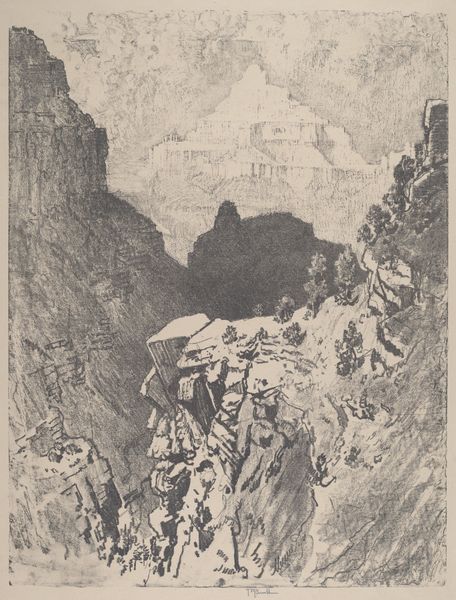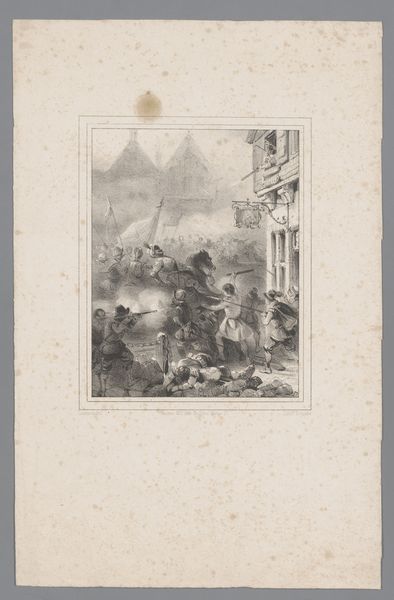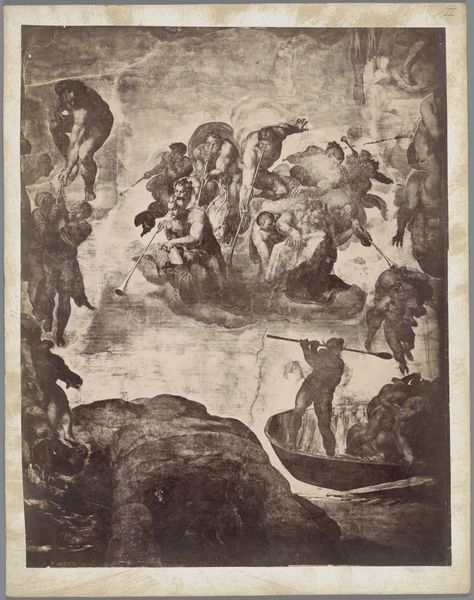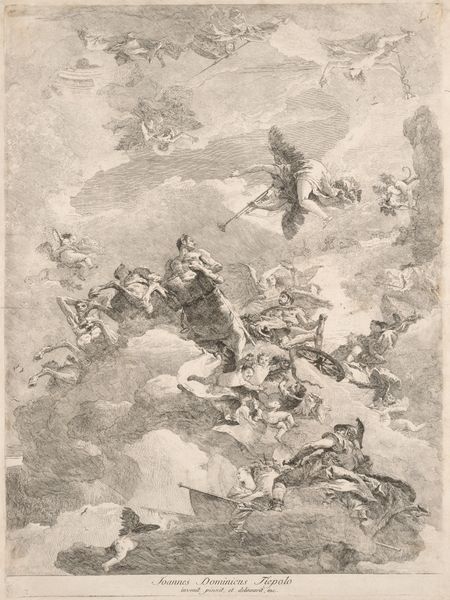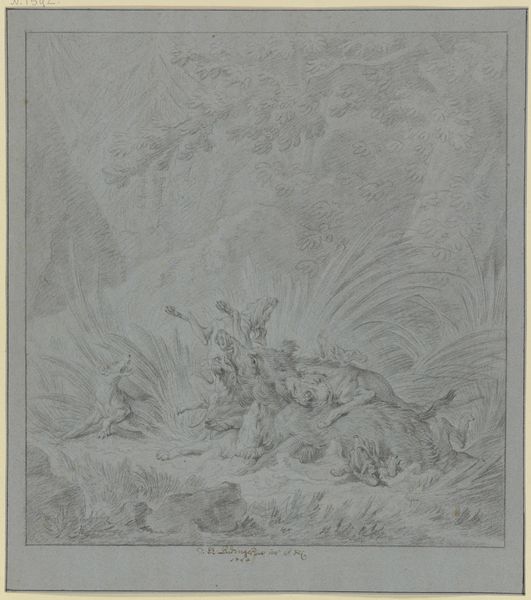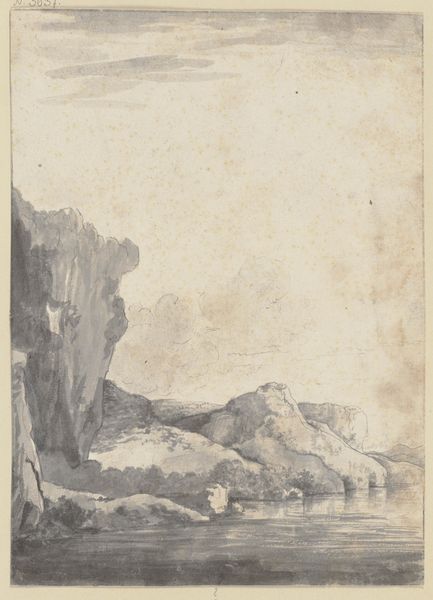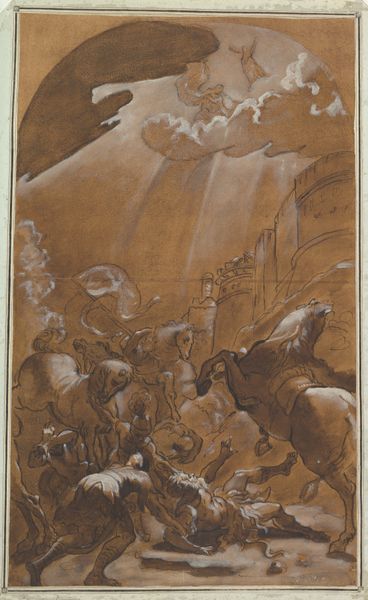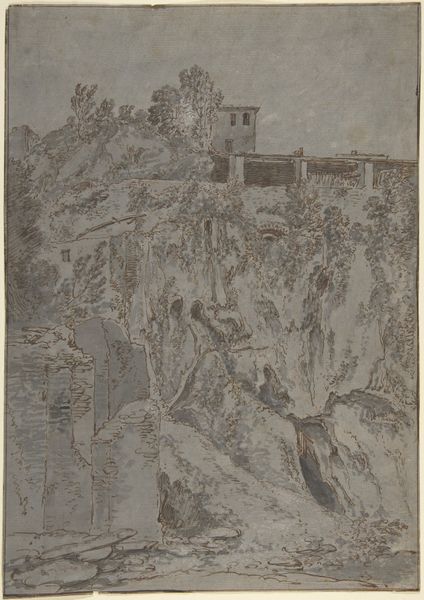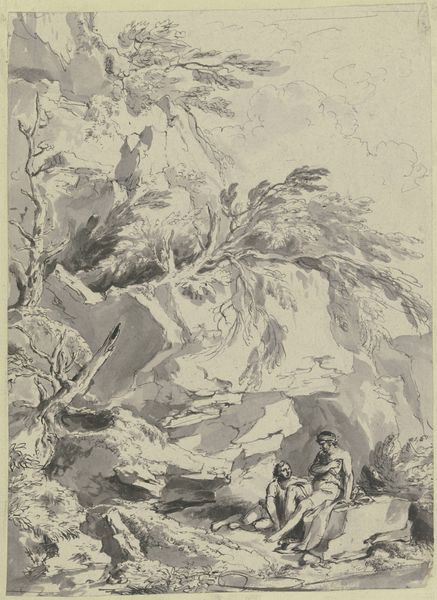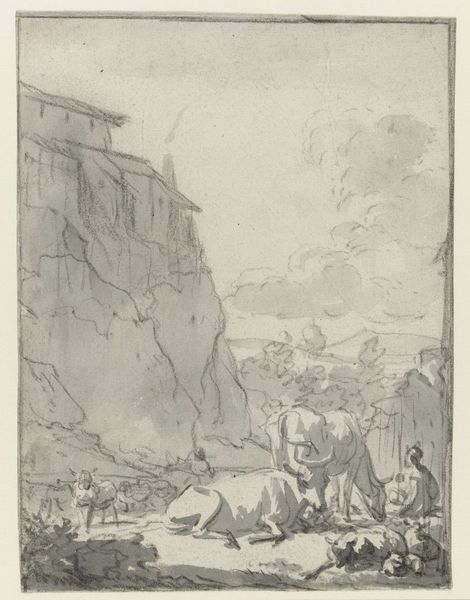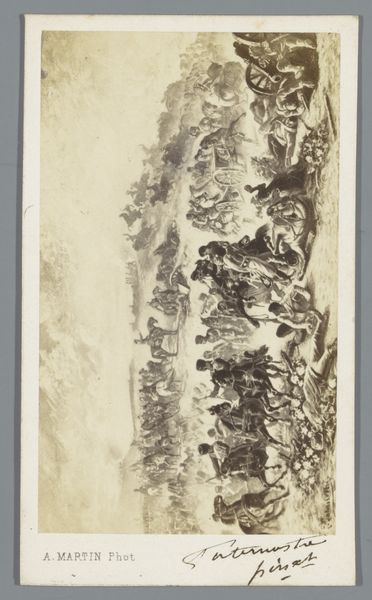
Hector's Farewell to Andromache and Astyanax 1676 - 1746
0:00
0:00
drawing, print
#
drawing
#
toned paper
#
water colours
# print
#
possibly oil pastel
#
handmade artwork painting
#
oil painting
#
coloured pencil
#
underpainting
#
men
#
watercolour bleed
#
watercolour illustration
#
watercolor
Dimensions: 13 7/16 x 8in. (34.1 x 20.3cm)
Copyright: Public Domain
Curator: Oh, it just pours with emotion, doesn’t it? That rawness, that desperation… almost visceral. Editor: Indeed. We're looking at Sebastiano Galeotti's drawing, "Hector's Farewell to Andromache and Astyanax.” It likely dates somewhere between 1676 and 1746, crafted with watercolors and perhaps some touches of oil pastel on toned paper. Curator: Toned paper, right, that sort of sepia wash makes the whole thing feel like a faded memory. It's a poignant scene; the mighty Hector, that doomed Trojan hero, saying goodbye to his wife and son before going off to face Achilles… Knowing what's coming hangs over the image, doesn't it? Editor: Absolutely. And it reflects a fascinating moment in art history, where classical themes like this became vehicles to explore contemporary issues. This drawing presents a deeply personal moment amidst public, political events. Consider how the artist positions Hector— caught between his duty to Troy and his love for his family, a conflict easily relatable in any era marked by war and upheaval. Curator: He seems torn, doesn't he? That arm outstretched almost looks like he's pushing away, not embracing. And Andromache, pleading, utterly heartbroken. I love how he uses the washes to create this whirlwind of emotion. What kind of impact did presenting artwork this way, outside traditional venues, offer to audiences in that era? Editor: Well, circulating drawings and prints like this democratized art in some ways. They became accessible outside the confines of elite collections, enabling wider audiences to engage with these powerful narratives and moral questions. The artwork also takes on social dimensions by inspiring dialogues in coffee houses and print shops, making it a medium for shared intellectual and political life. Curator: It is quite magnetic, isn't it? And still resonates so strongly across centuries. A father's reluctant choice and the universality of the human condition, captured in ink and grief. So touching. Editor: Very true. It serves as a constant reminder that art has the power to bridge the gap between personal stories and universal historical narratives, provoking introspection no matter the passage of time.
Comments
No comments
Be the first to comment and join the conversation on the ultimate creative platform.

